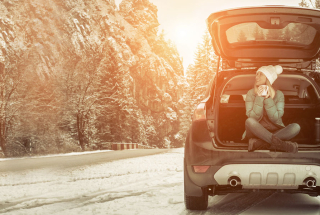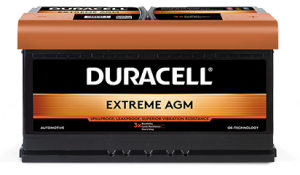NEWS & PRESS
13 Reasons Why the Start-Stop System May Be Deactivated:
- Temperature Conditions: Extremely high or low outside temperatures, as well as engine temperature, can deactivate the system. Newer start-stop technologies work at temperatures as low as -10°C, while older systems may only function above +3°C.
- Interior Temperature: If the heating system hasn’t sufficiently warmed up the cabin in winter, the system may stay inactive.
- Air Conditioning or Heating: An active air conditioner or heated windscreen can prevent the system from operating.
- Stop-and-Go Traffic: Frequent stops and starts, such as in urban areas or traffic jams, can disable the system.
- Vehicle Still in Motion: The car is still coasting or rolling at a low speed.
- Minimum Speed Not Reached: Some vehicles require a minimum speed of around 4 km/h before the system activates.
- Steep Gradients or Slopes: Driving on significant inclines can deactivate the system.
- Clutch Pedal Engagement: Pressing the clutch temporarily disables the system.
- Battery Sensor Malfunction: A defective battery sensor may impact system functionality.
- Towing a Trailer: When towing, the system is often deactivated as the brake booster is not active with the engine off.
- Low Brake Pressure: Insufficient brake pressure prevents engine shutdown.
- Parking Maneuvers: Indicators such as unbuckled seat belts, open doors or bonnet, or sharply turned steering wheels can deactivate the system.
- Diesel Particulate Filter (DPF) Regeneration: During DPF regeneration, the system remains inactive. This process can take up to 40 minutes.
Note:
A relatively new issue may cause the start-stop system to stay active. This is often due to a software error in the engine control unit. Your trusted service center can assist with a software update, error code analysis, and test drive to resolve the issue.
What Could Indicate a Defect?
If none of the above situations apply, a defect may be the cause. Common issues include:
- Start-Stop Battery: A very low battery state of charge (SOC) may cause problems. In such cases, the battery should be charged, and the alternator (generator) checked. Vehicles with energy recuperation (brake energy recovery) typically use AGM or EFB batteries with a charge level of approximately 70% SOC.
- Defective Battery: In cases of total battery failure, the start-stop battery must be replaced.
Important: Never install a conventional starter battery in vehicles with start-stop systems. These batteries are not designed to handle the increased load and may fail within a few months. - Sensor Issues: Problems with temperature, external sensors, or the mass airflow sensor can disrupt system functionality.
- Clutch Switch Failure: A defective clutch switch may prevent status communication to the engine control unit, disabling the system.

1. Keep it active and on the move.
Inactive batteries start to discharge in a process during which lead sulphate forms of the battery plates and obstructs the current flow. A charger keeps the battery in shape and prevents sulphation.
2. Keep it clean.
Ensure that the surface of the battery is clean and dry using an antistatic cloth. Moisture in the engine compartment causes current creepage, which consumes energy. In addition, do not use any so-called improvement agents.
3. Keep it safe in winter.
Battery starting performance declines in cold weather. Therefore, in order to have sufficient power, switch off additional consumers such as blowers and the heating until the engine is running. Moreover, turn them off before shutting down the engine.
4. Keep it running marathons.
During short trips cars often require more energy than the dynamo can generate and recharge, which means that the battery is subject to constant discharging. Therefore, if possible take the car out for longer runs in order to charge up the battery, or even better treat your battery to an external compensatory charge. The environment will be most grateful.
5. Keep it fit for winter with an extra charge.
Frequent short trips in combination with stop and start traffic reduce the energy level of the battery during every start and drive. Give your battery an extra portion of power with external charging, especially before the first cold winter weather arrives.
6. Keep your convertible in trim during hibernation.
Are you mothballing your car for the winter? If so and the battery is to stay in the vehicle, then remove the negative terminal. The battery must remain dry and cool (but frost-free). Recharge at the latest when an open-circuit voltage of 12.5V is reached. The solution for these requirements of seasonally driven cars is provided by regular compensatory charges and charge retention.
7. Keep a booster close at hand.
Due to the sensitive electronics in the vehicle, jump-starting should generally only be carried out with a jump-start device. Car-to-car jump leads can cause voltage spikes when disconnected, damaging or even destroying the vehicle's electronics.

1. Breakdown number ONE
According to the breakdown statistics of the automobile clubs, faults in the vehicle's electrics/electronics due to weakening batteries are the most frequent cause of breakdowns - at approx. 42%. The reasons for this are often a high load from many electrical consumers and inadequate battery management.
2. the heart of the vehicle's electrical system
Parking heaters, start-stop systems, recuperation: the electrics of modern vehicles are becoming increasingly complex and require more cycle-resistant starter or on-board batteries.
3 Short distances, more power
Due to stop-and-go traffic and frequent short trips, the vehicle often needs more energy than the alternator can produce and recharge during the journey.
4 Always on - digital networking in the car
Safety and comfort functions, the anti-theft alarm system, coming- and leaving-home functions always need power, even when the car is parked.
5. shorter service life
In extreme heat or long periods of standing, the battery suffers from self-discharge. Its lifespan is shortened due to higher water consumption and corrosion.
6. sub-zero temperatures cost energy
As temperatures drop, the battery's performance also decreases simply because of poorer charge absorption. In addition, additional electrical consumers such as seat, parking or rear window heaters, etc. require a lot of energy in the cold season. need a lot of energy during the cold season.
7. hard workers for your comfort
Ventilation, seat or auxiliary heating, infotainment, ... Modern cars use the battery not only for starting, but also more and more as an on-board battery.
8. energy for the environment
Recuperation and start-stop systems make modern cars much more environmentally friendly by reducing fuel consumption and CO2 emissions.
emissions. The basic prerequisite: an extremely cycle-resistant start-stop battery that reliably delivers top performance start after start and drive after drive.

Electricity to go
Lead-acid batteries in the hobby and leisure sector versus "other, more innovative, more modern battery technologies".
Nature lovers and outdoor enthusiasts are people with a particularly strong connection to nature and can feel good about the fact that the batteries in use are recycled and reused.
Not thrown away and landfilled!
Battery recycling for a clean environment!
No other battery technology is as recyclable, sustainable and environmentally friendly as the lead-acid base used in Duracell Leisure.
Duracell lead-acid batteries are European recycling champions!
In fact, the recycling rate is 100%, higher than aluminium cans, glass or waste paper!






